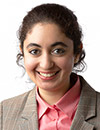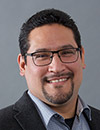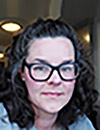Industry Event
Quantum Technologies: Fundamental Research to Application
7 December 2022 • 11:15 - 12:15 GMT | NEC, Hall 11 theatre
Welcome and opening remarks
 |
|
11:15
British Telecommunications quantum activities and explorations
 |
|
Emilio Hugues-Salas is a Specialist Research Professional at British Telecommunications plc where he contributes to the UK AIRQKD and the Quantum Data Centre of the Future projects, and to activities aiming at the design of experimental quantum networks. Formerly, Dr. Hugues Salas supported several European- and UK-funded projects as a researcher and Co-Investigator in the areas of quantum communications (e.g. UK Quantum Communications Hub, EU Quantum Flagship UNIQORN). He is author and co-author of over 100 journal and conference articles focused on optical and quantum networks. Dr. Hugues Salas is a Full College Member of the UK EPSRC Peer Review Associate College, an Associate Editor of the IEEE/OSA Journal of Lightwave Technology and a Senior Member of OPTICA.
11:35
FLIMERA: Tissue imaging using a widefield FLIM camera
 |
|
Andy Keating is the Life Sciences Sector Sales Manger for HORIBA in the UK and Ireland, responsible for the strategic development of commercial opportunities with the pharmaceutical and wider life science industries. With a background in molecular biology and optical spectroscopy, Andy has worked in the photonics sector since 2011, supporting research, industrial, and OEM customers via a range of photonics-based analytical techniques including fluorescence, Raman, hyperspectral imaging, SPRI, and particle size analysis.
11:55
Quantum sensing in industry: how can we accelerate and integrate to reach the end user?
 |
|
Louise Smethurst is a Consultant Engineer at BAE Systems Submarines, primarily working in the radiation metrology field. She is responsible for the development, calibration and deployment of radiation detection methods across the Astute, Dreadnought and SSNR submarine programmes. Louise is also responsible for all technology development and research activities for ionising and non-ionising radiation applications and platform sensor networks. Louise is the radiation Qualified Person for the Barrow-in-Furness shipyard. She graduated from Lancaster University in 2006 with a First Class Masters in Physics (MPhys) and then completed a PhD in quantum turbulence in the Physics Department at Lancaster University. Louise sits on the Society for Radiological Protection's Metrology and Measurement Science Committee.